December 12, 2021
Martha O'Kennon
Well, after installing the floating heater onto the pond, and a few days of freezing temperatures, on Friday all the ice was gone.
Here you see the scene on Friday morning, with the pond almost exactly half-frozen over, and the other half thawed! Here the reflection of a tree in the water is superimposed over the image of fishes at the bottom of the pond on Friday.
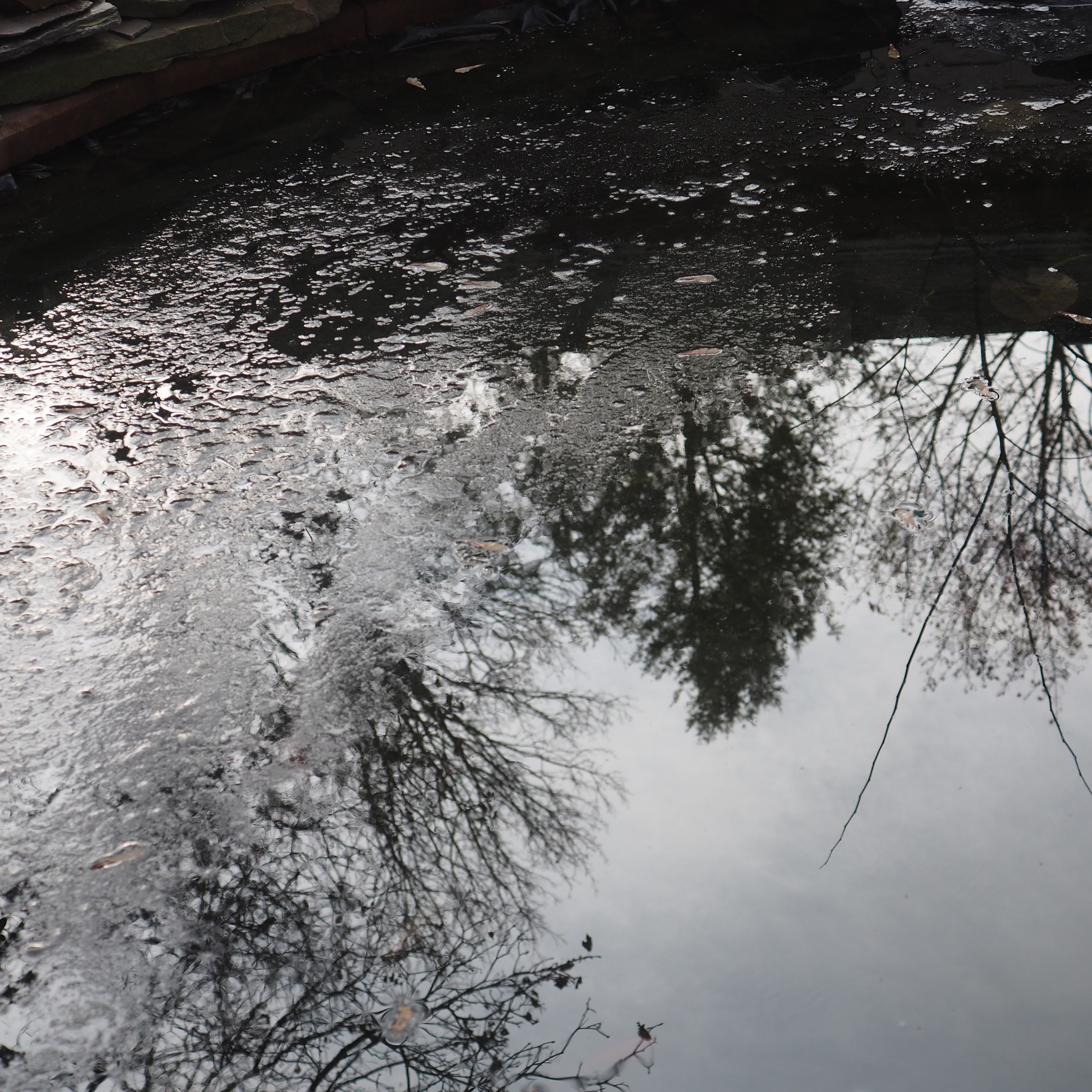
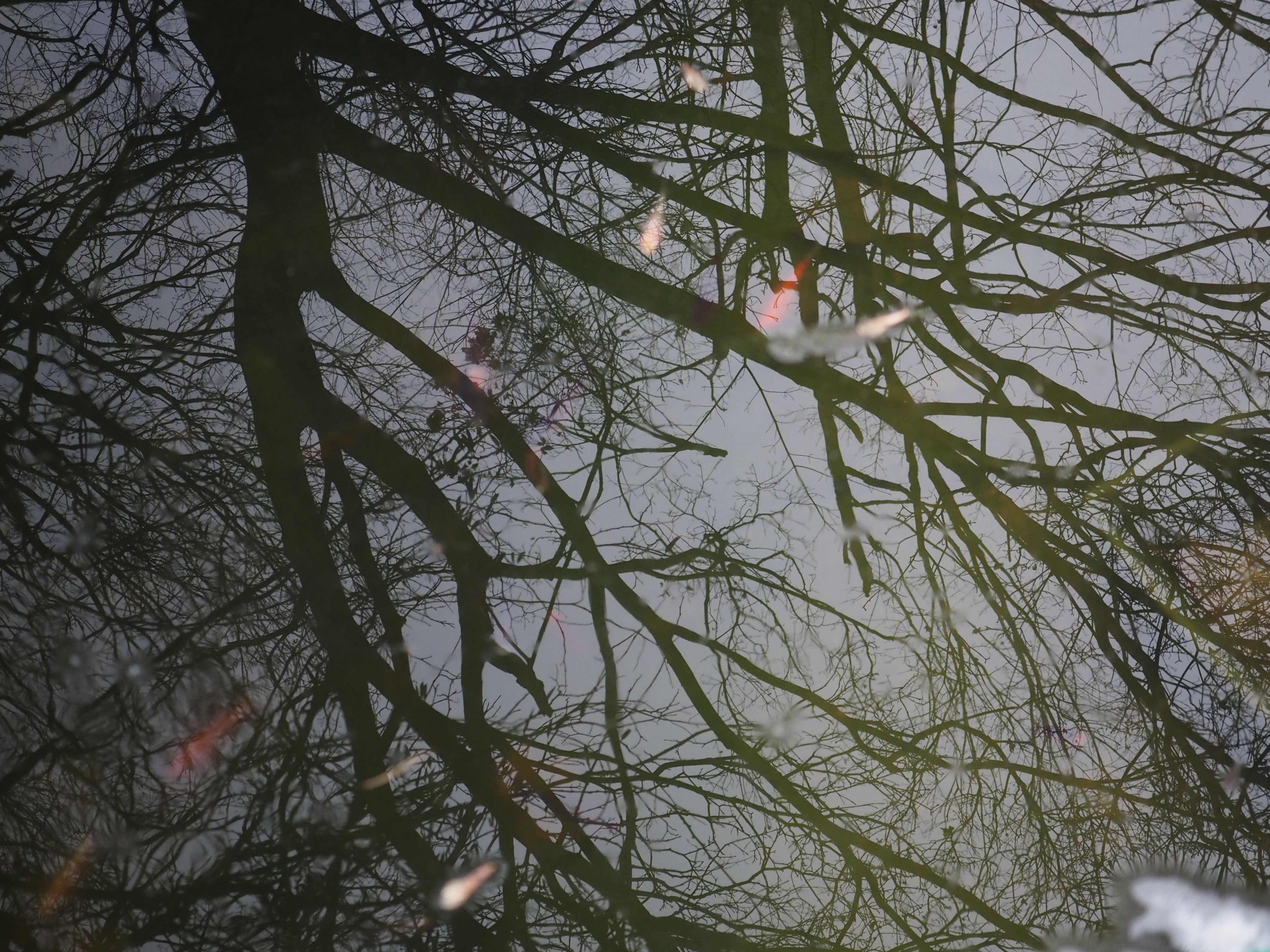
Remember that there is information in the name of the file for each image. You can see it by mousing over the
image - look at the lower left of the screen. Or you can click on the image to get to the (usually) larger image.
Then the info is displayed in the address line above. Sometimes the second click will actually display a
different view of the original image.
Again, all the ants we meet are the Small Honey Ants, looking for any food bits they might be able to store for the winter down under the Shop. No worry, they are just in winter survival mode. You might remember this scene from April 2019 when the Small Honeys were swarming. Pictures 2 and 3 are of a Giant Aphid, probably a Giant Conifer Aphid, based on its contiguity to a Blue Spruce, which hangs over the Shop.
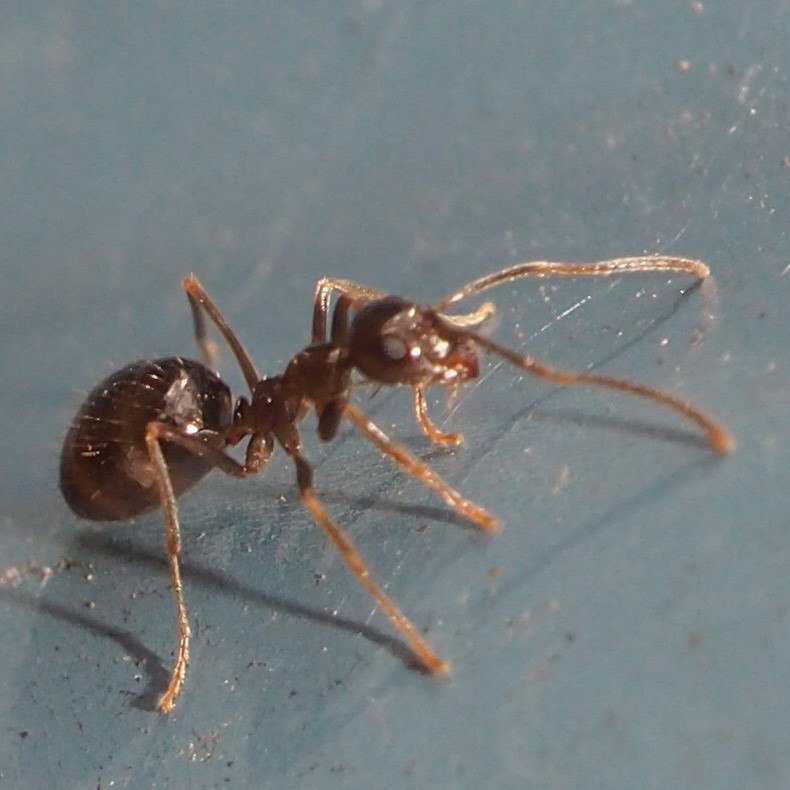
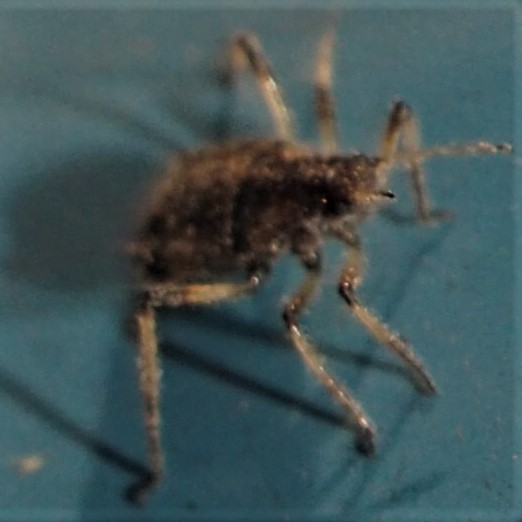
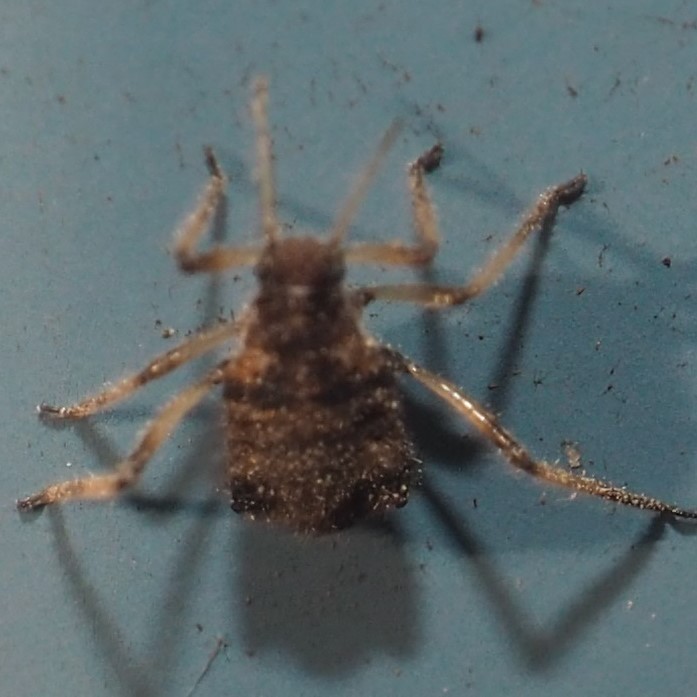
Activity among the Barklice is limited, but not gone for the winter YET. For instance, that nest of eggs that we've been following for a couple of months now is making progress, seen in picture 1, where this week the nymphs to be are beginning to throw off their brown coatings. Picture 2 shows a clutch of Graphopsocus cruciatus eggs under a light web. And third, another style of Barklouse nursery. Flash: I was about to send this blog to bed but when I went out to get some pictures for the next blog, I found this: a new picture of the brown barklouse nest, with a sudden burst of action. Now I'll have to watch carefully for more action.
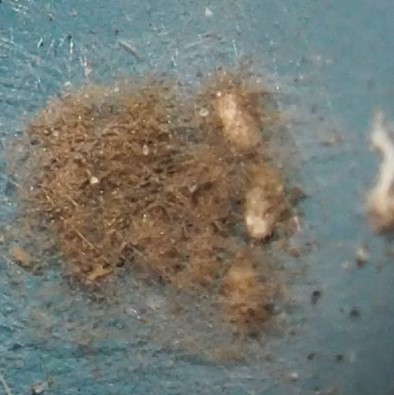
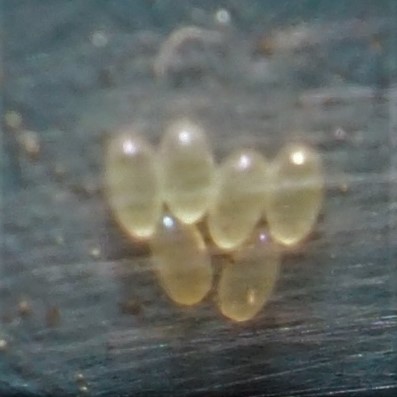
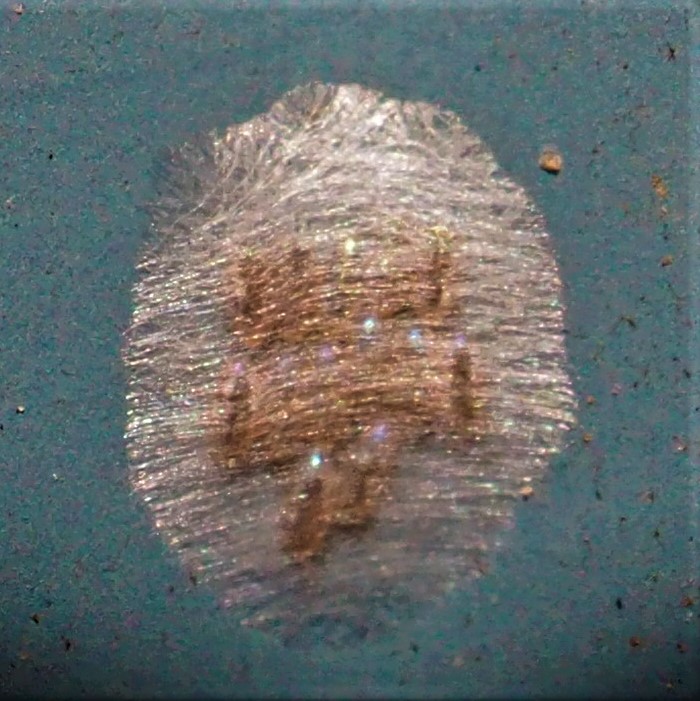
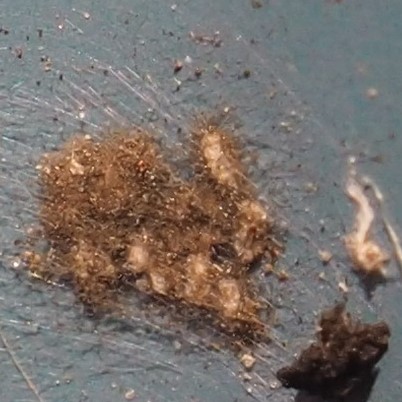
These first ones may be Graphopsocus eggs, but are covered with an especially thick and elliptical netting. In picture 2, we see some development inside this nest (different from image 2).
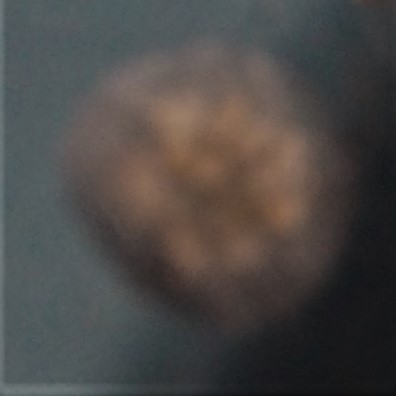
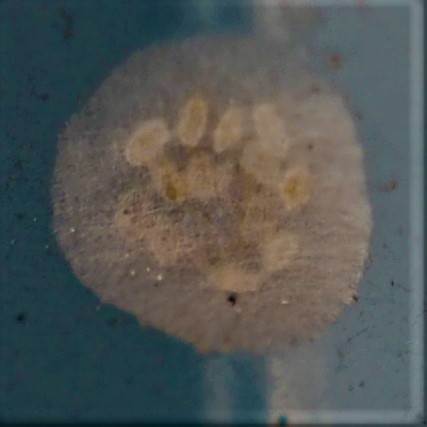
Nymphs and adults are less-visible these days. Here's a definite G. cruciatus nymph. The next one is quite yellow and has red eyes. So even with the faint thoracic dots, I'd still say this is a Valenzuela nymph. (note: most of the Graphopsocus nymphs have grey eyes.) The first two appeared at my eye level on the South or East Wall.
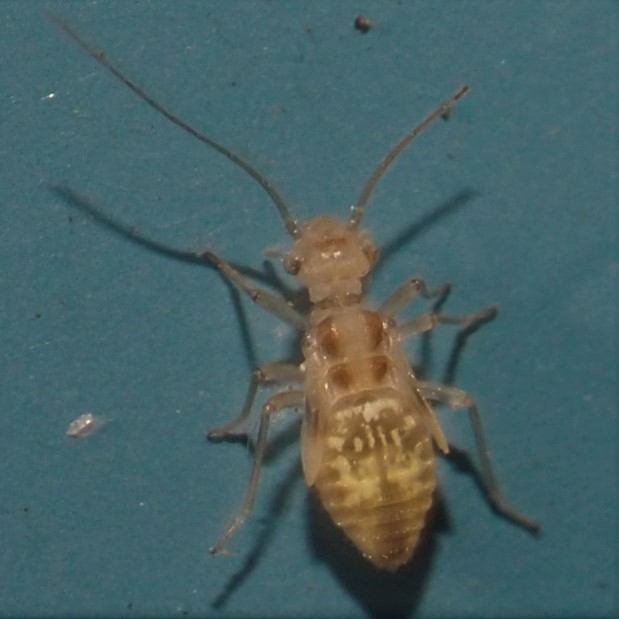
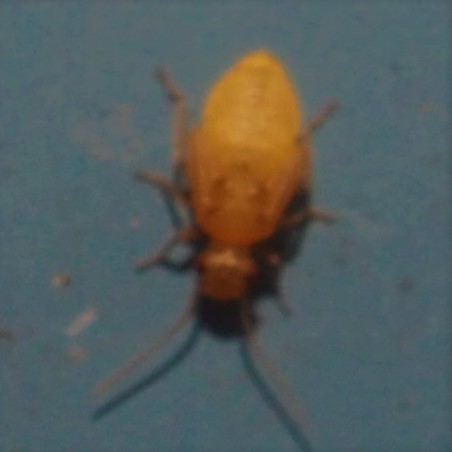
Adults we saw this week: Graphopsocus cruciatus; Valenzuela (probably Flavidus). This third one is probably Echmepteryx hageni. (We've been seeing it in this form for about a month now.)
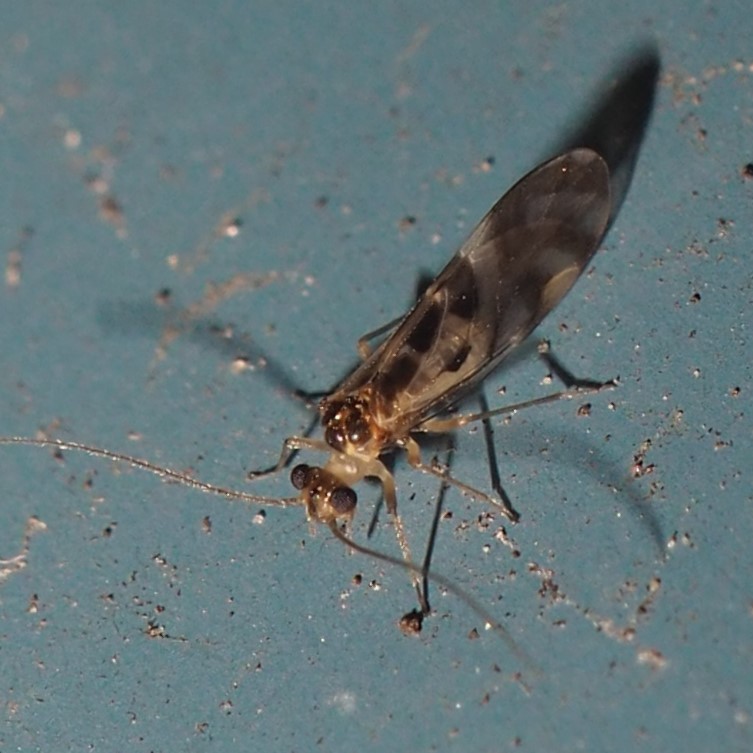
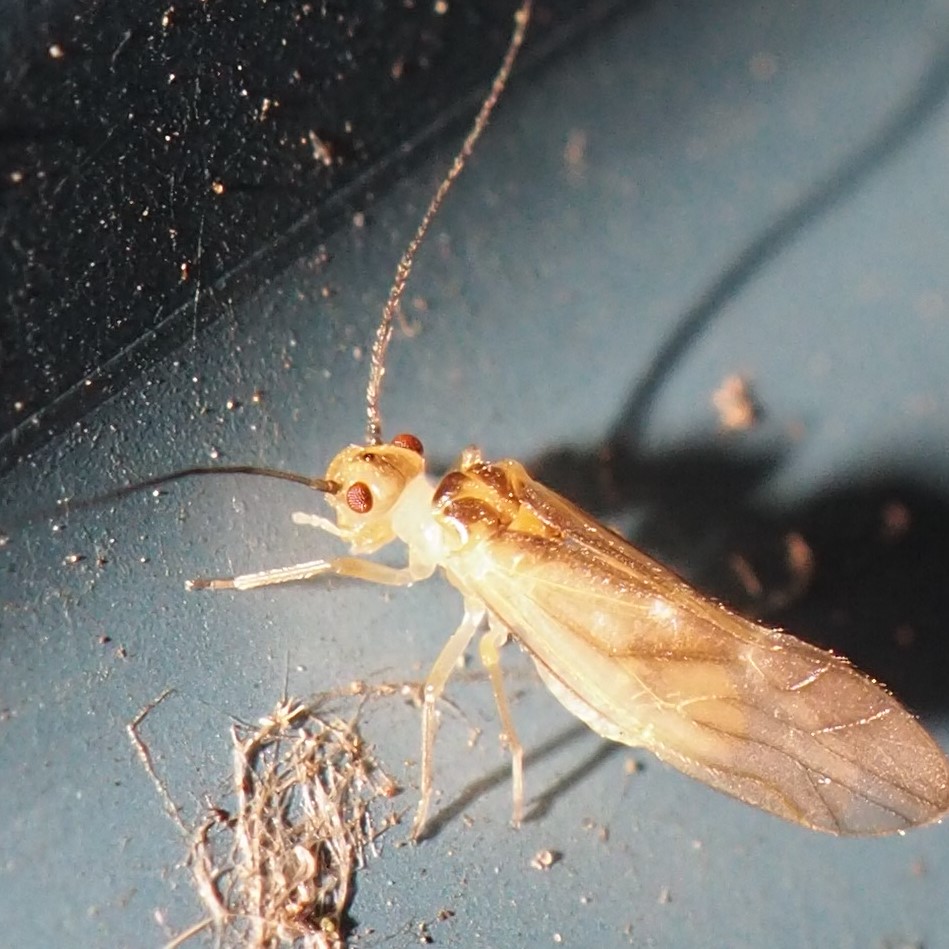
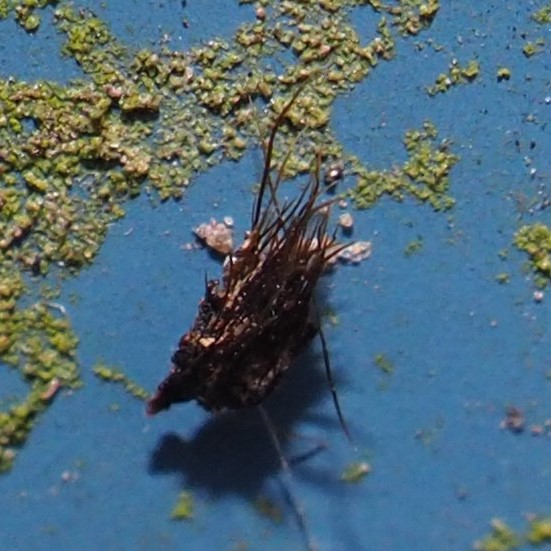
Here are three shots of a Lachesilla (genus only identified, not species) that we saw all week. The fourth picture, shot on the base of the shop siding, has the wrinkly abdomen of Lachesilla but the venation of V. flavidus. It could be a newly hatched adult, which lacks proper coloration at first.
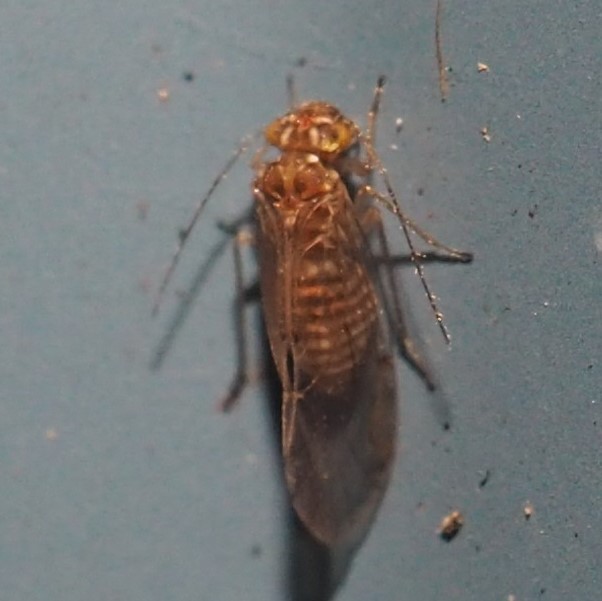
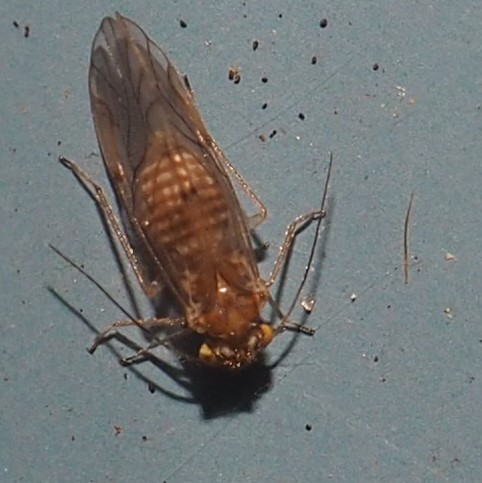
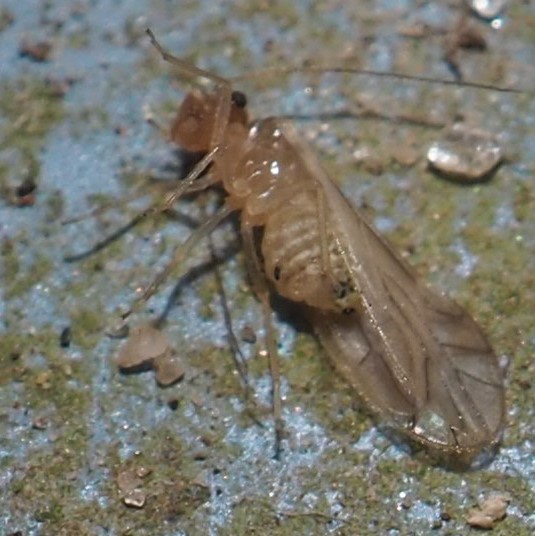
Here are two views of a Lady Beetle. At first when I saw the whole logo on the face, it was more than I usually expect of the "W" motif in an Asian Lady. I submitted it as a generalized Lady Beetle, but @richyfourtytwo and @sammydstecher of iNat brought it back to Asian Lady Beetle. You have to check!
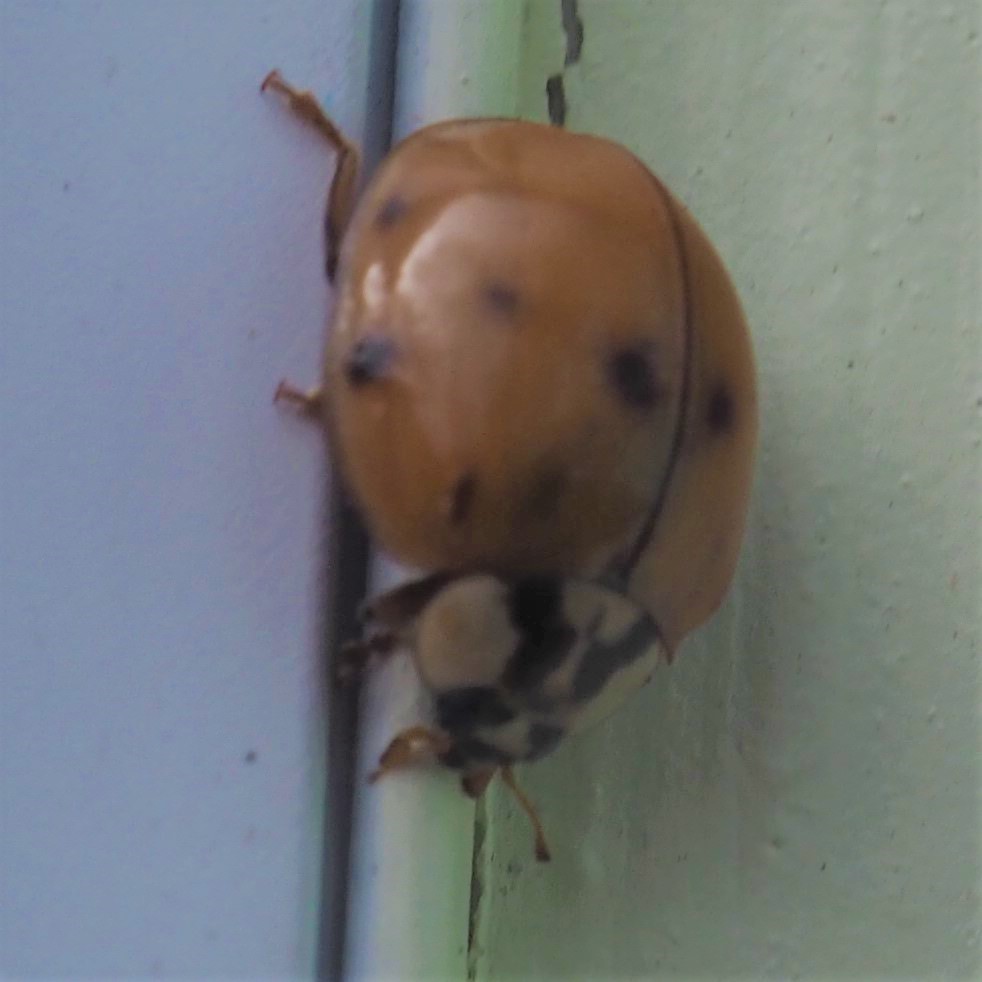
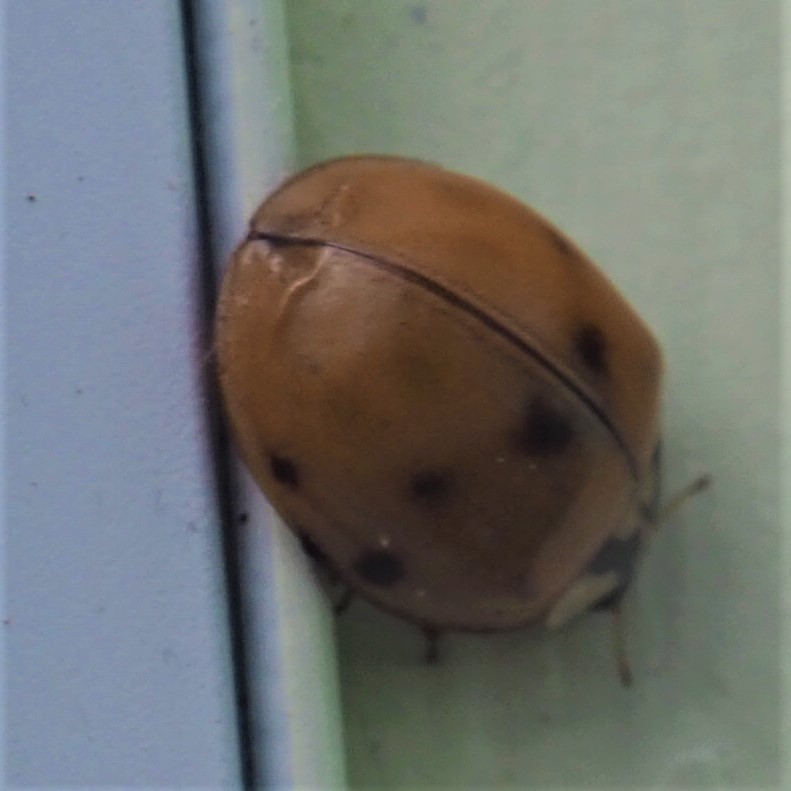
What luck! This tiny Weevil let me get two good shots. It's a White Clover Weevil. Remember a couple of weeks ago, we talked about the Clover Weevil group? @Borisb of iNat says they hibernate as adults, but can stroll about when it's warmer, as it was this day.
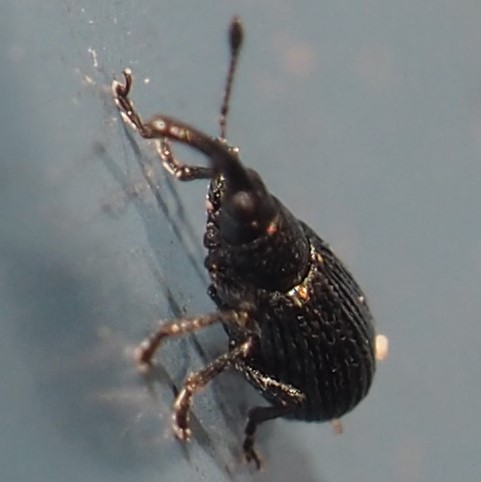
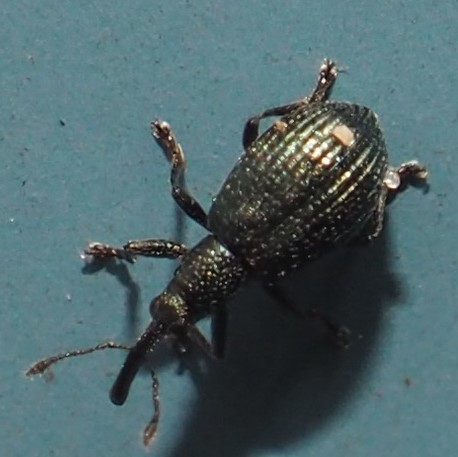
In general I can find a Leafhopper any time of year, but this week I found three horrible knockoffs. Turns out they were not even Bugs, just figments of design - obtained from just shooting anything you see and then bothering @hopperdude215. It's so embarrassing! So, NO Leafhoppers! And worse, no True Bugs for us this week! So we look for Flies! And found a lot! Not a lot that I could identify, but many of them anyway. So let's see how far we can go trying to categorize them.
First is what looked like a creature turning inside out to me, but I really think it's one kind of bug (generic meaning) climbing on the back of a real Fly. Next, a real Crane Fly and a real Midge.
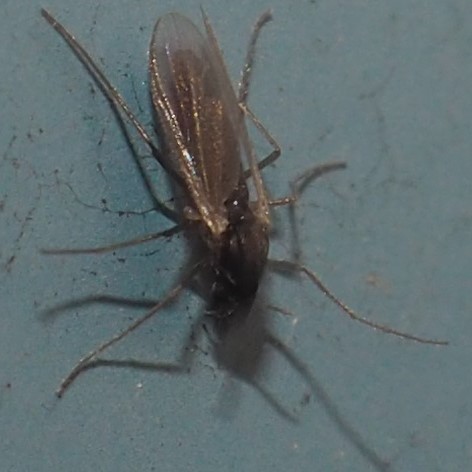
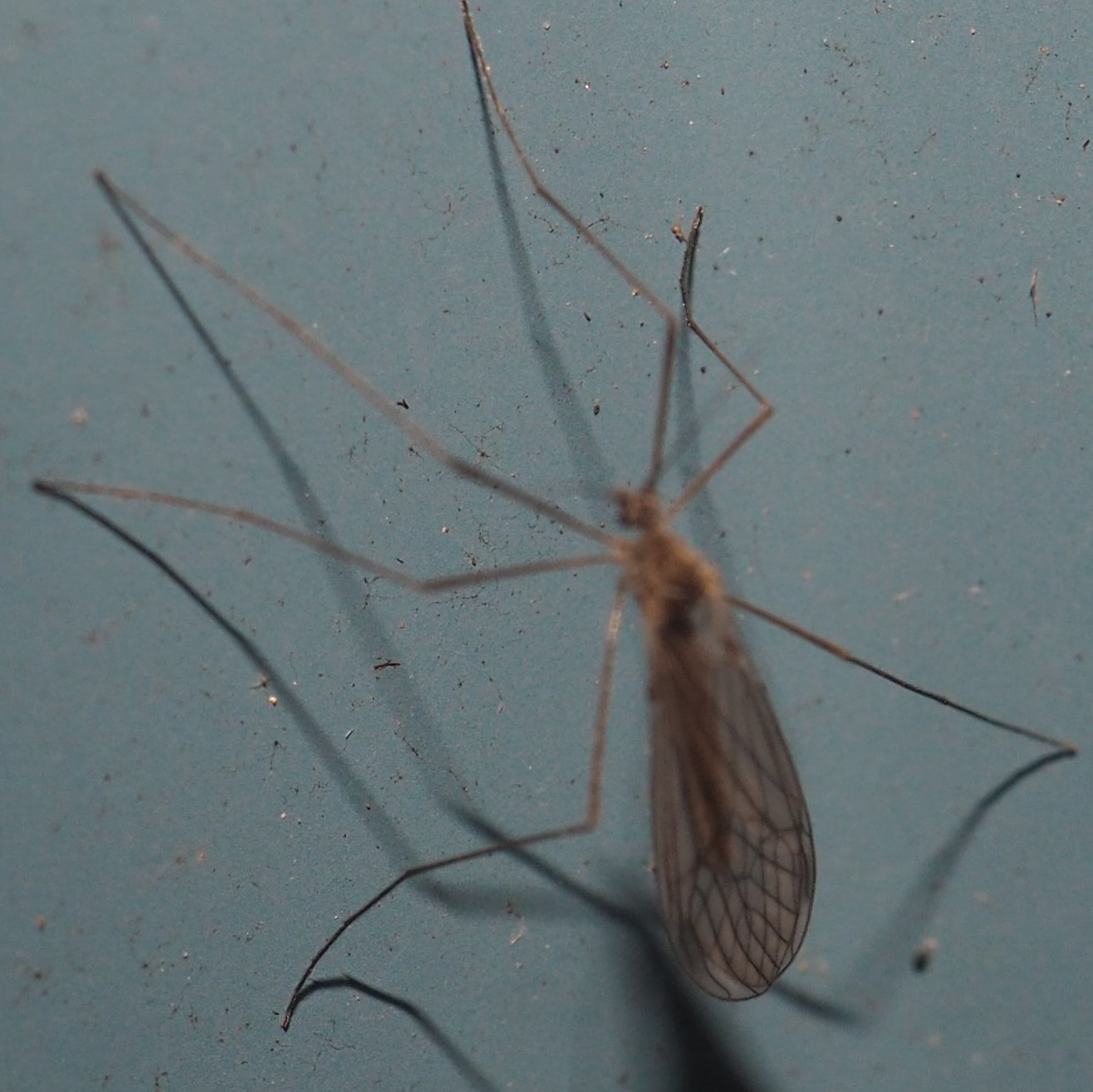
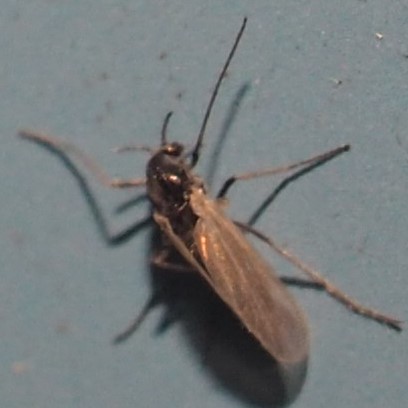
Now for another turn through the Moth Flies, What follows is not a batch of those lovely Bathroom Moth Flies, but another kind of Moth Flies, probably better-suited for the winter. They land in a category called Moth Flies and Sand Flies. Out old friends the Bathroom Moth Flies are in this grouping, and so are our new friends. First is a Whitish Little Moth Fly. (I made this name up, which is not like having one named after you.) Then comes a Beige Little Moth Fly, a Light Beige Little Moth Fly, and a Brownish Little Moth Fly. These are different from the Long Little Moth Flies, which come next.
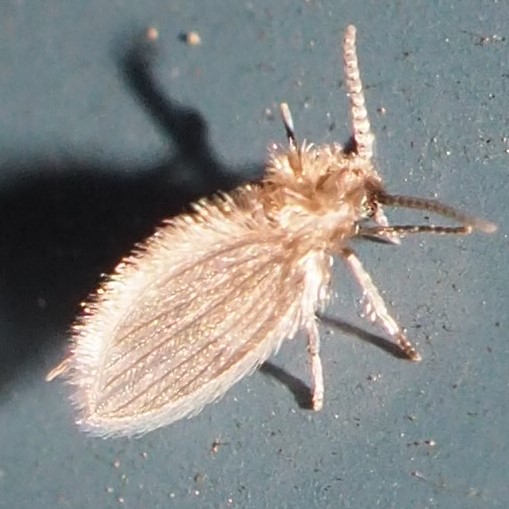
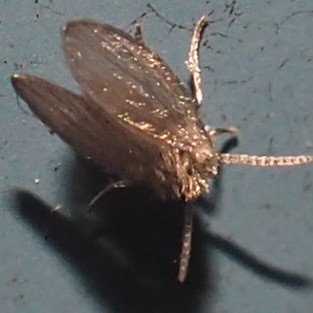
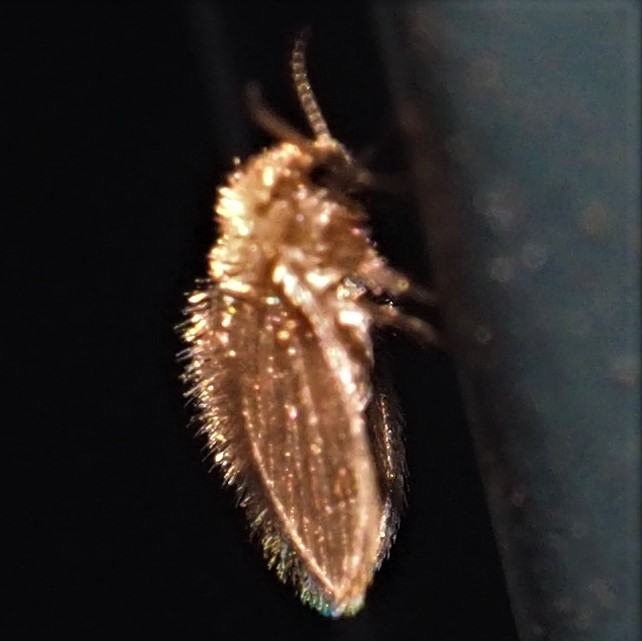
This is the last of my Little Moth Flies. I'm calling it a "Black Long Little Moth Fly".
.
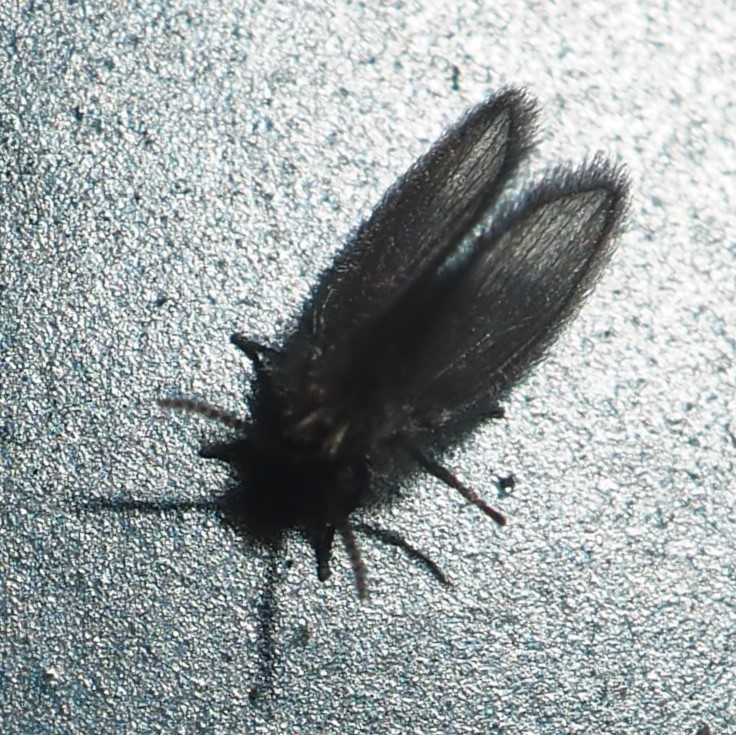

My friends, that was just about it for the Flies so far this week. Let's move on to the Lacewings. I had thought those Green Lacewings had thrown in the metaphorical towel, since they had already lost their green color from a couple of months before, when they were still capable of devouring Aphids (if we had had a decent crop of them), but this week they moved and so are still alive!
.
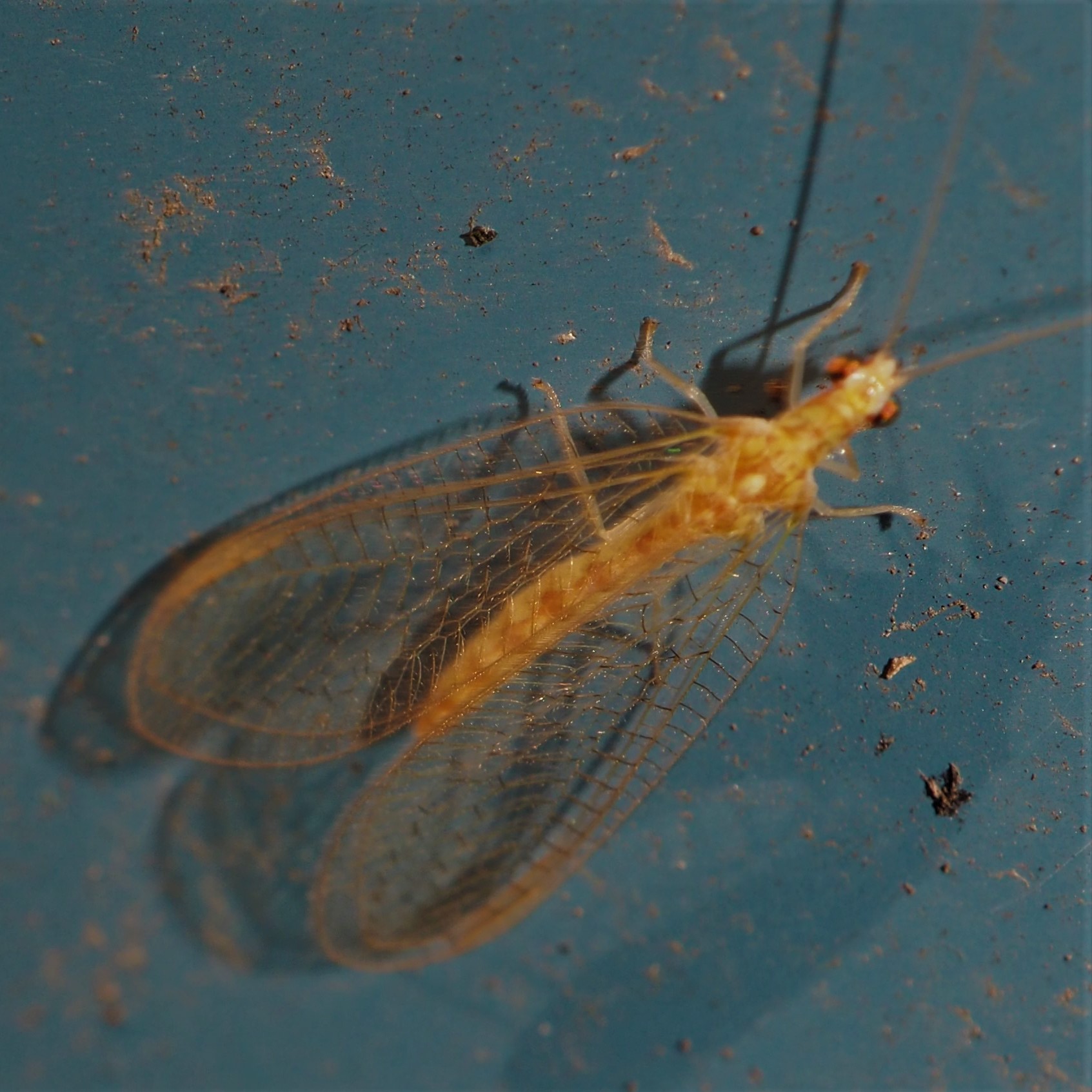
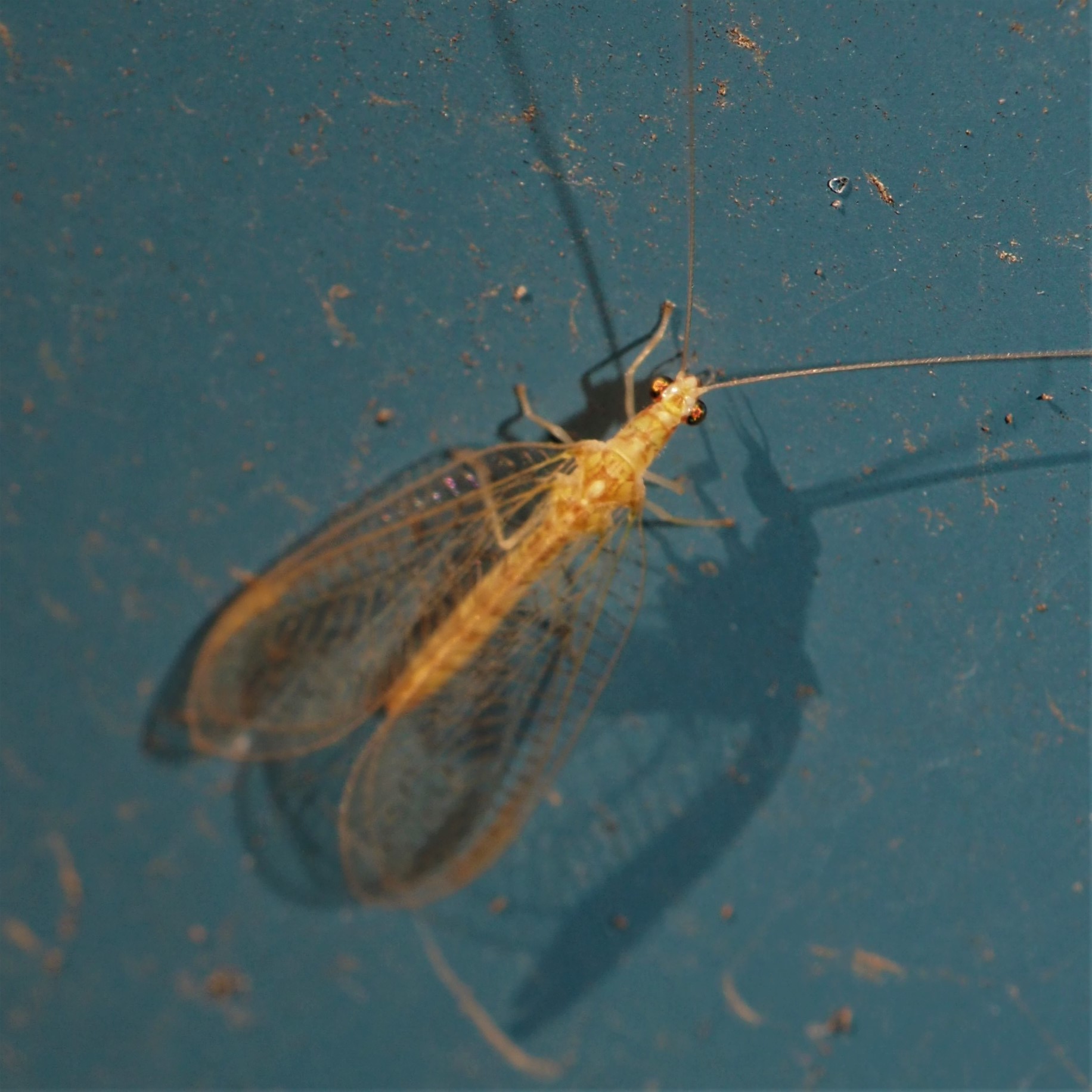
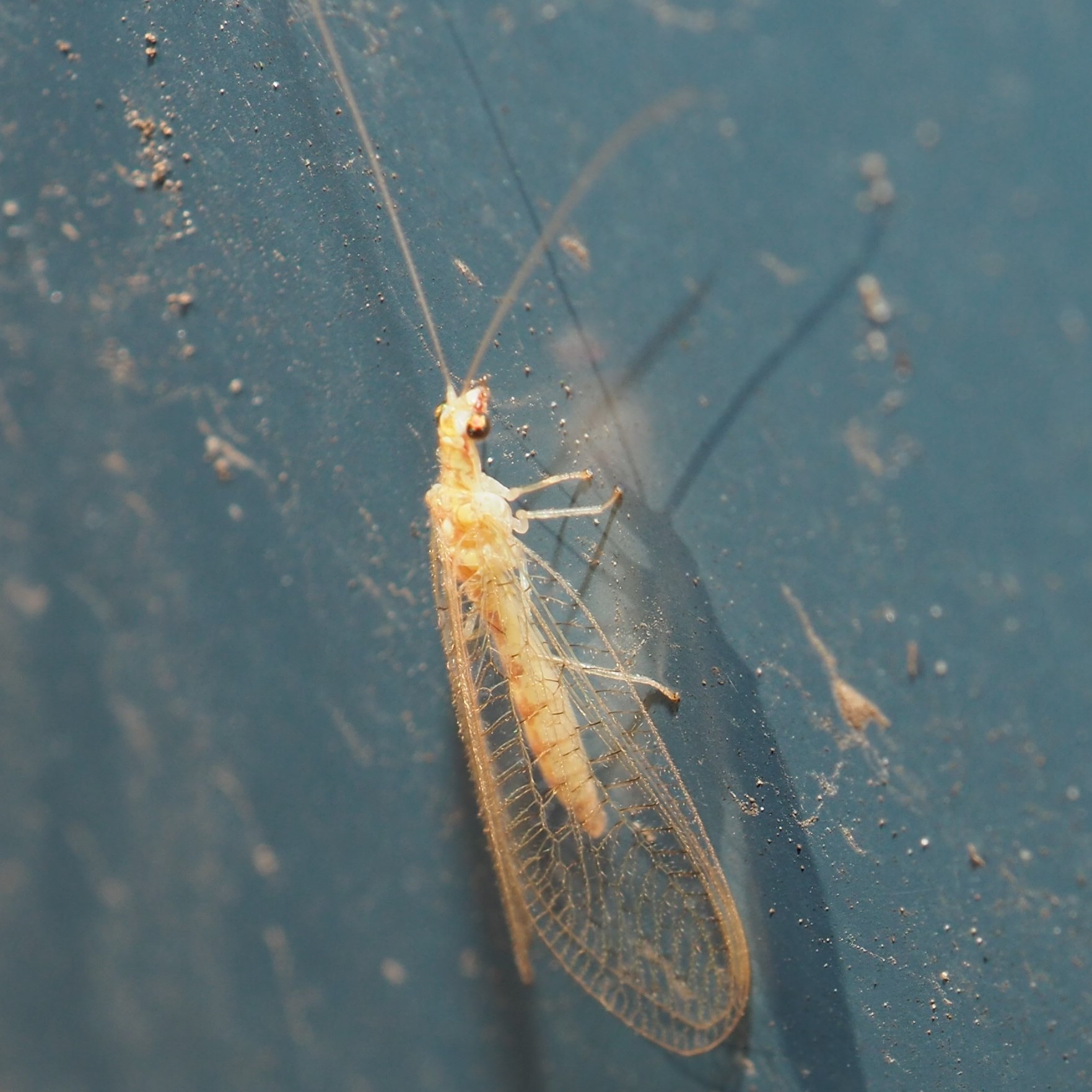
Here are a couple of Eastern Harvestmen (Leibunom vittatum) who came out in the warm days to see what they could find to eat along the base of the Shop.
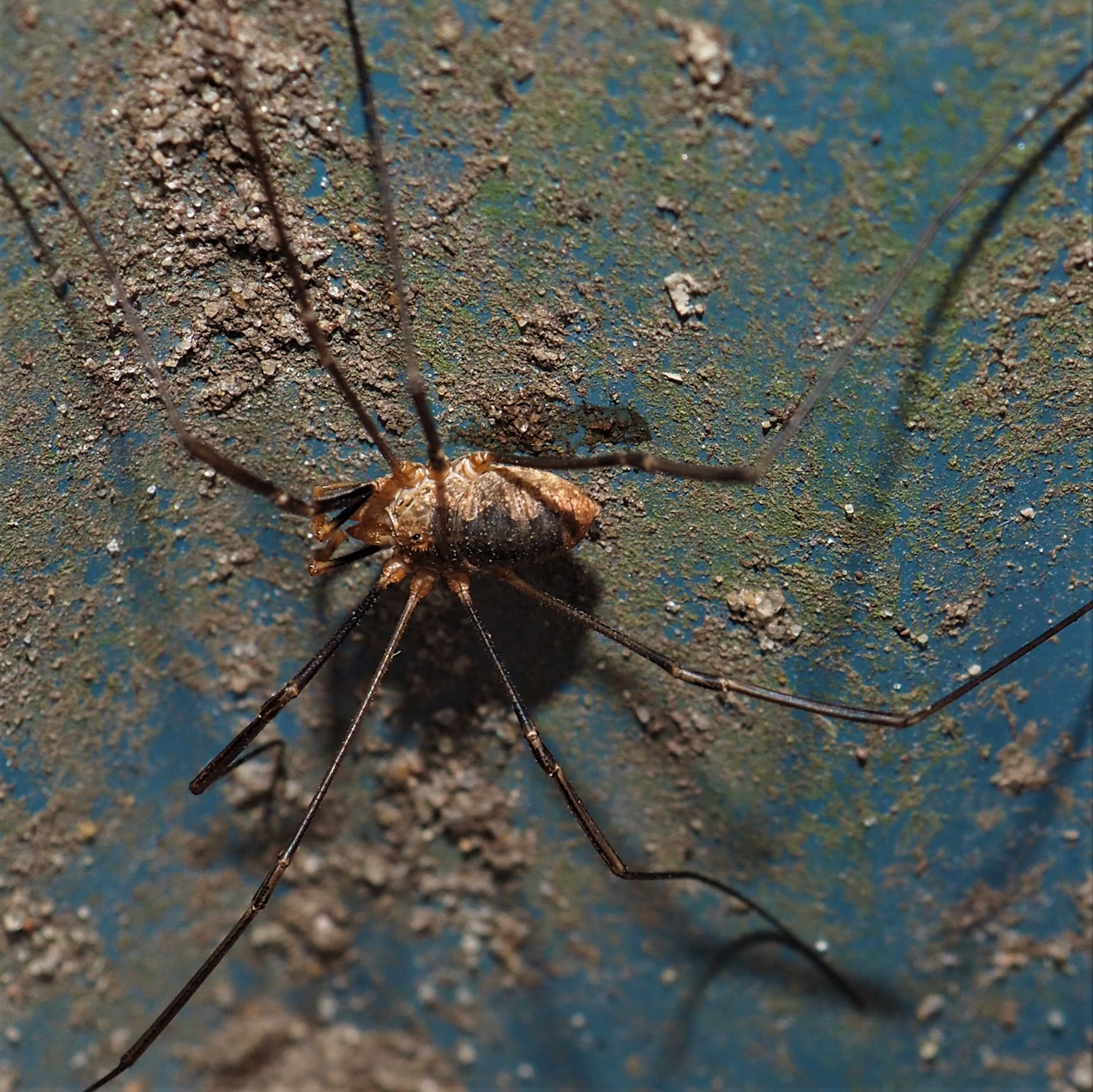
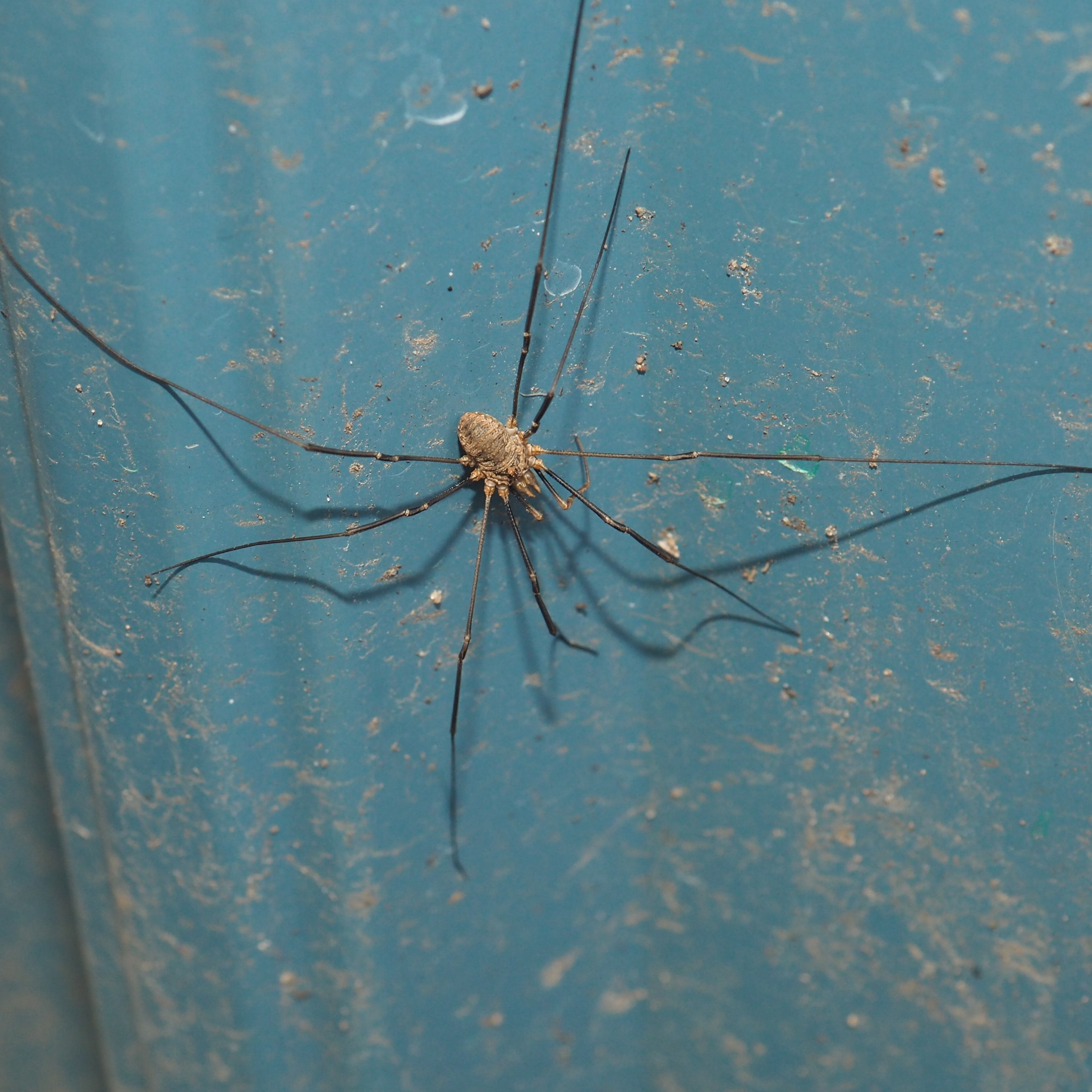
Next, the countrymen of the Harvestmen, the Spiders! This week, we saw an interesting set of Spiders.
First here is one we haven't seen for a while, a Running Crab Spider. Second is a member of genus Grammonota, the ones with the pretty submerged-looking pattern, another cold-weather Spider group.
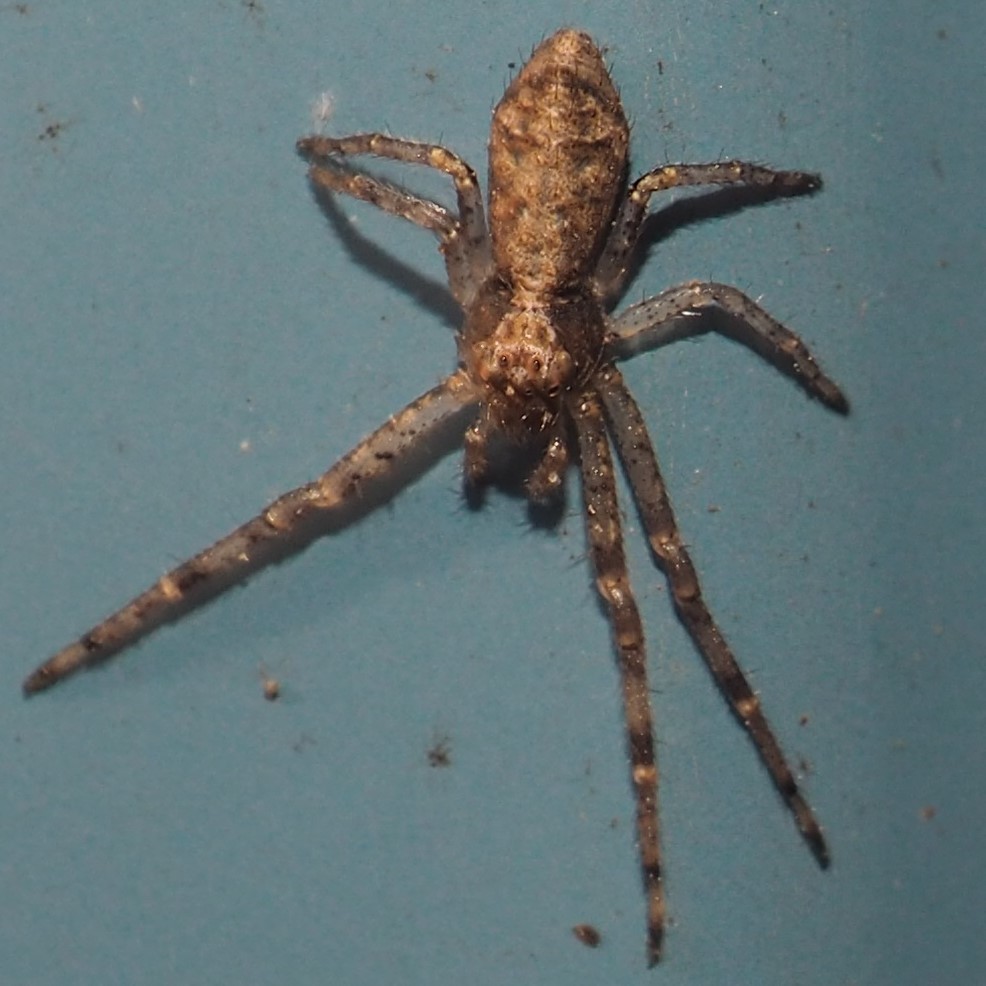
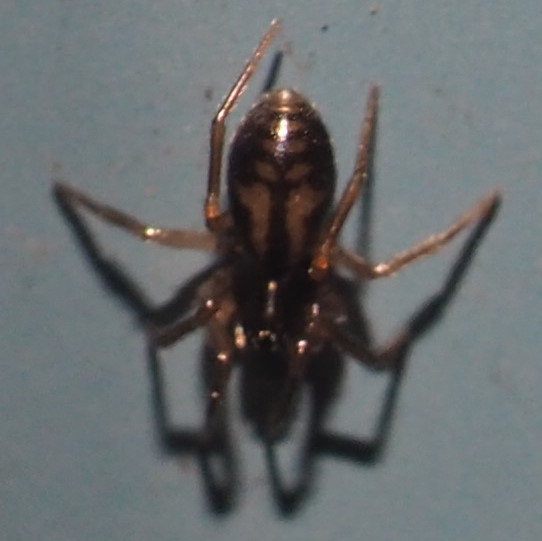
This tiny Spider, the Orchard Orbweaver, is a cheer for everyone who remembers its summer glory. Second is a picture of an adult in August, 2019. Just to show how many coats it can wear, here is a golden view from May 2021.
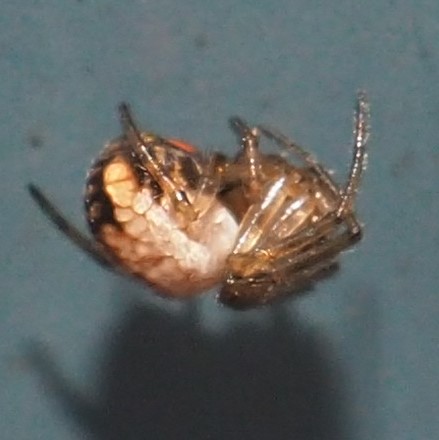
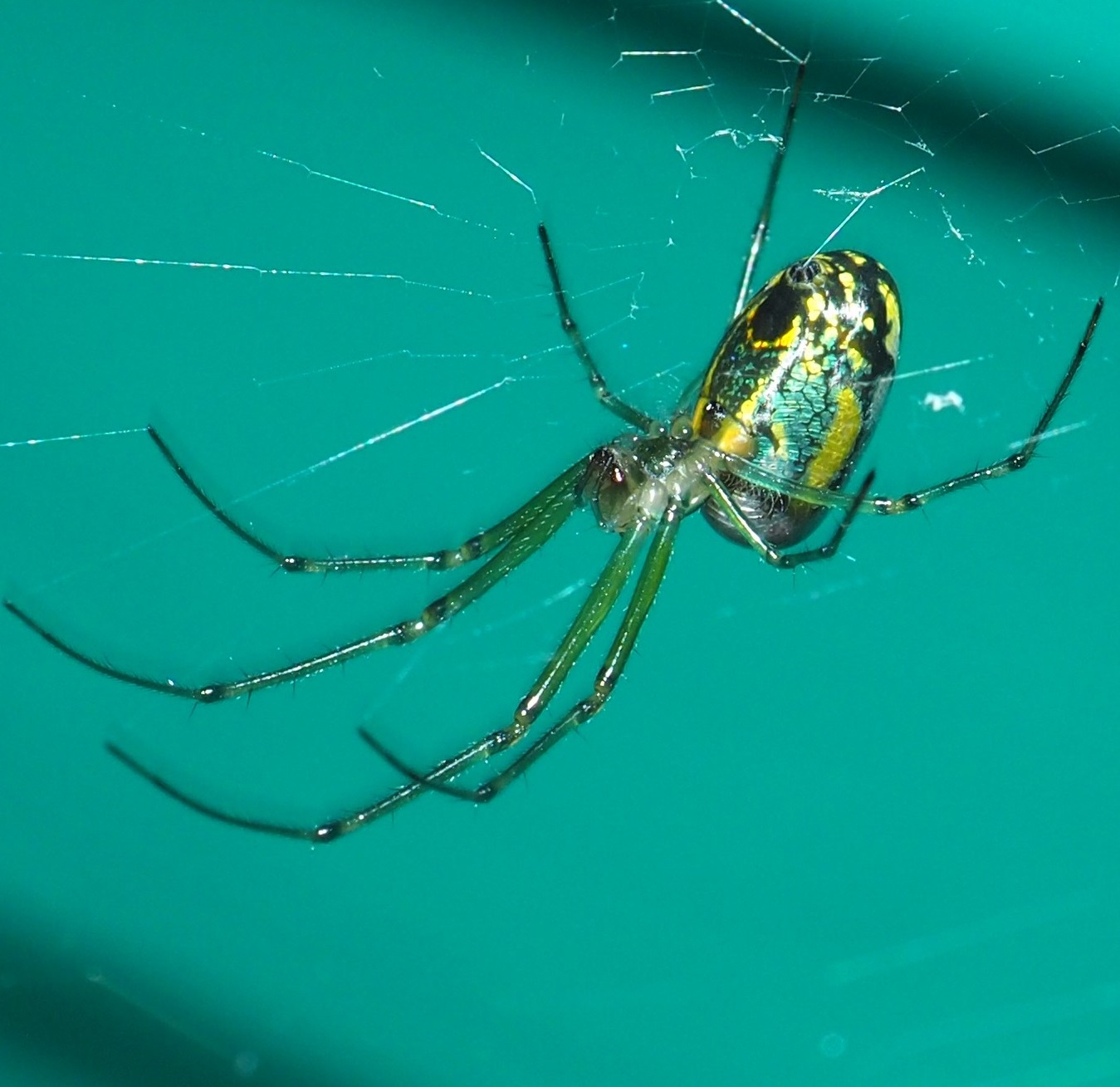
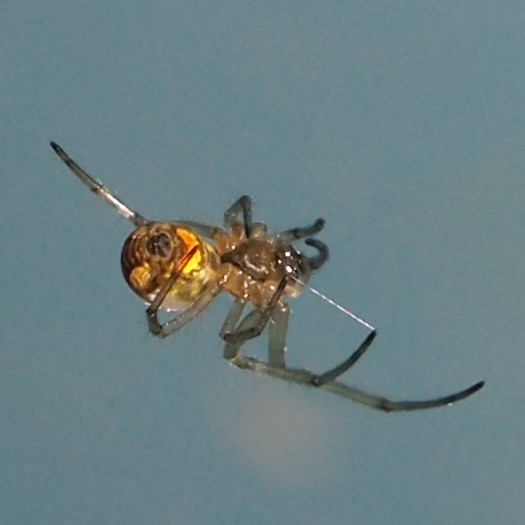
Surprisingly, there was a beautiful tiny wasp that seems to be an Ichneumonid Wasp.
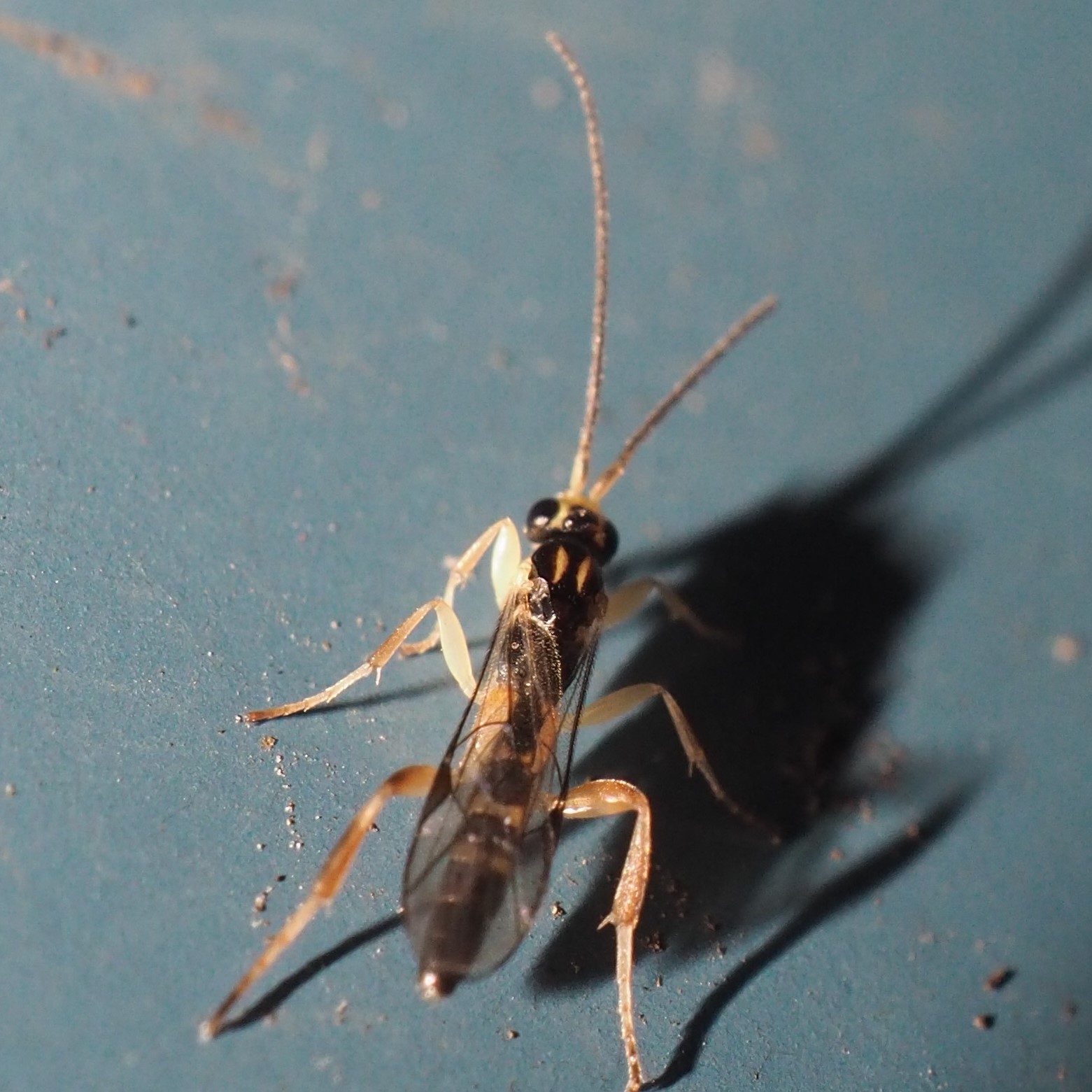
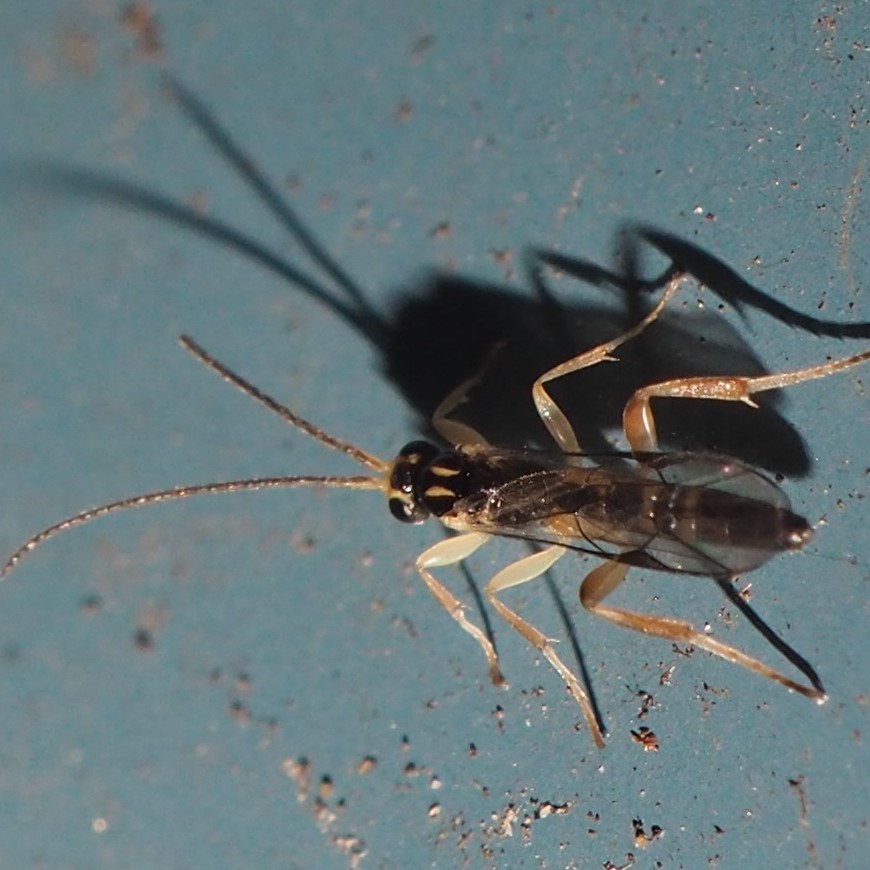
Now I'd like to share with you something that has bewitched me since I first spotted this little bunch of growths that proceed from the right side of a structure that reminds me of a nice sandwich (oh all right, everything reminds me of a sandwich, if not an enchilada!) I first noticed this little bit of gunk about 3 mm tall. It really did look like a flat bread open at the right-hand side and from which several small elements, light green and resembling little plant structures except that one of these seemed to have 6 legs! I posted the whole enchilada to iNat labeled as "Life", which is what you put next to something that does have some elements of a living structure. A couple of days later @lotteryd of iNat reposted with "Arthropods?" I agreed with this first level of diagnosis. Here are a few pictures starting last week and running to today. We will keep re-visiting this puzzle until we have a clearer idea of what is going on here!

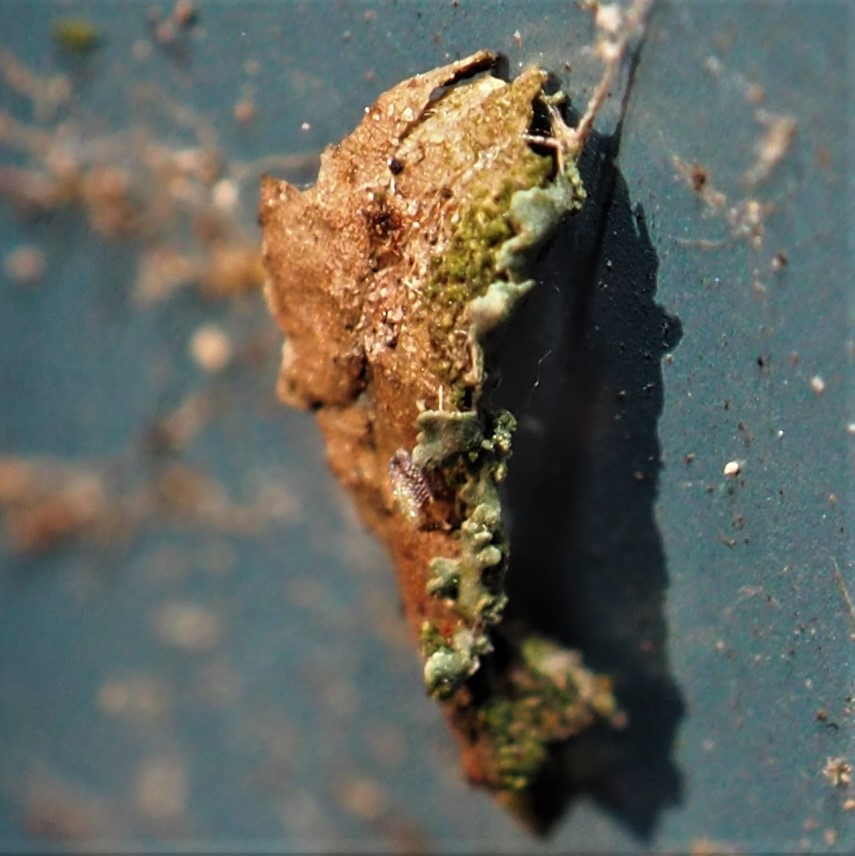
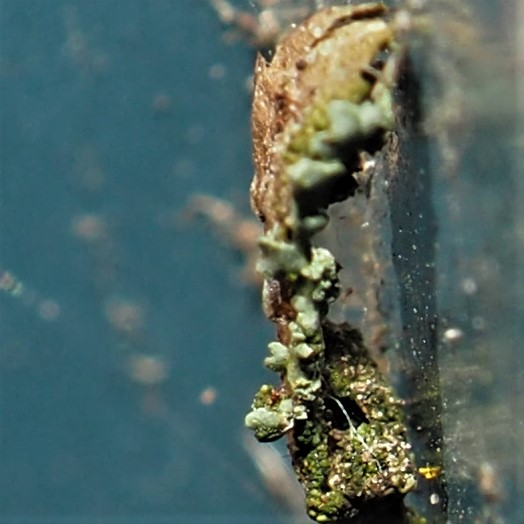
I got up a while ago to see what the picture from outside was. First off, the temperature had dropped to 40F, and to add to that the wind was roaring frigidly over the pond. I thought you'd like to see how that changes the theme. You can almost hear the wind blow. And the rain was on full-force just for a tiny time, long enough to get this little GIF. And to think just yesterday I could see to the bottom of the pond. So here's the pond with its tree reflection and an oak leaf drifting in from another yard to land where the net used to be. Enjoy!
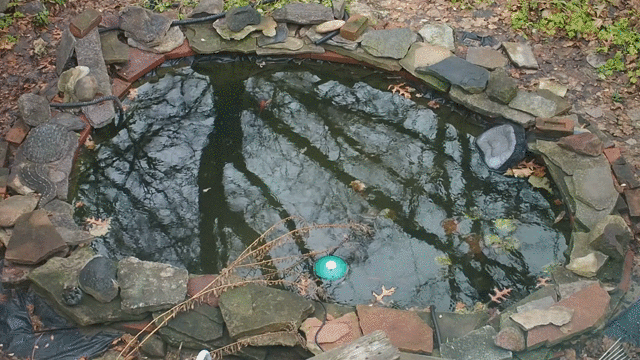
Oh, I just can't leave you with that sad picture. It is sunny right now and 47 F. Here is the living Jadesy. She decided to survive! And outside, the sky is bright blue and the old maple trees in the back have just enough leaves on them to get a little reddish glow up there.
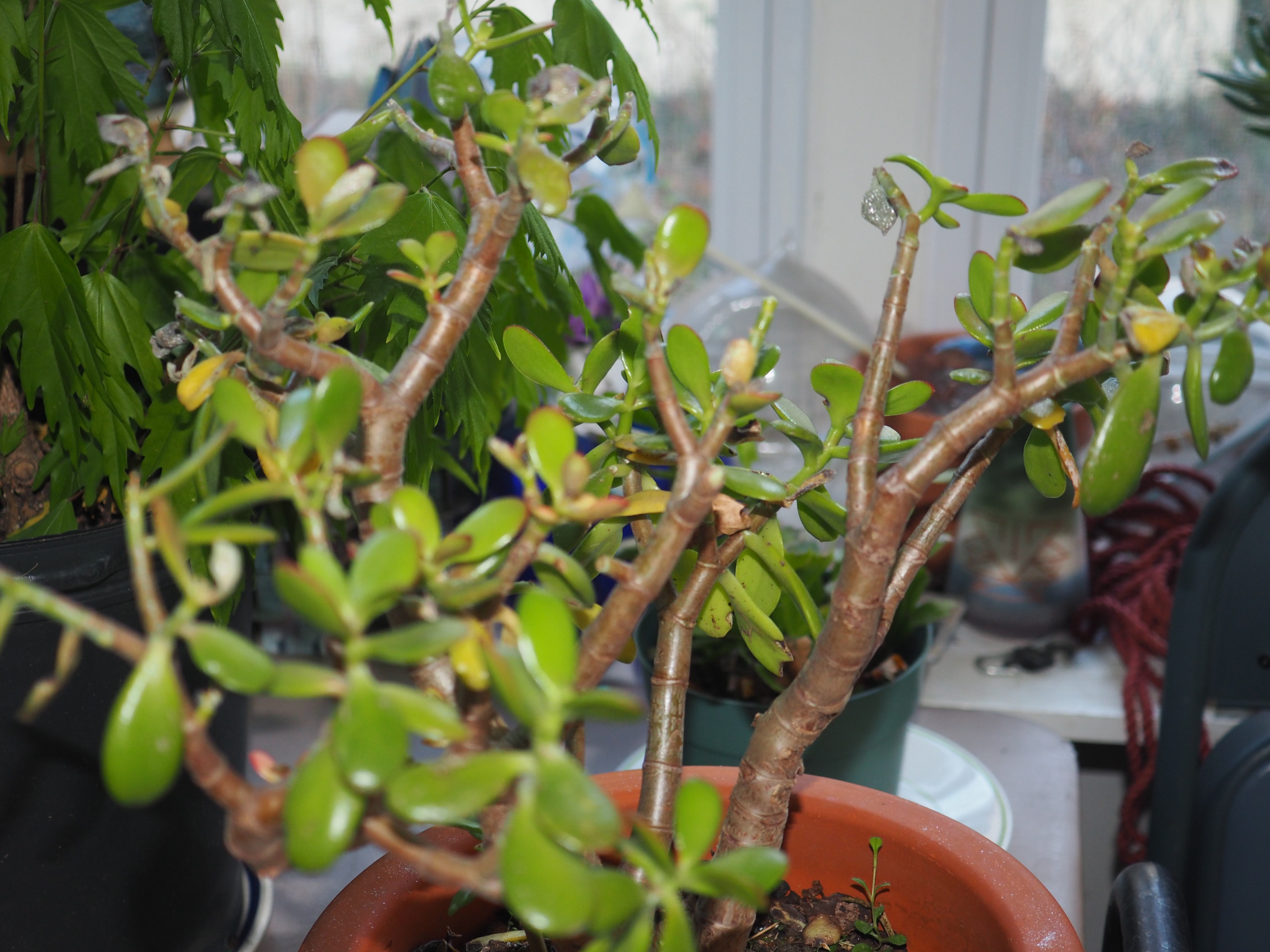
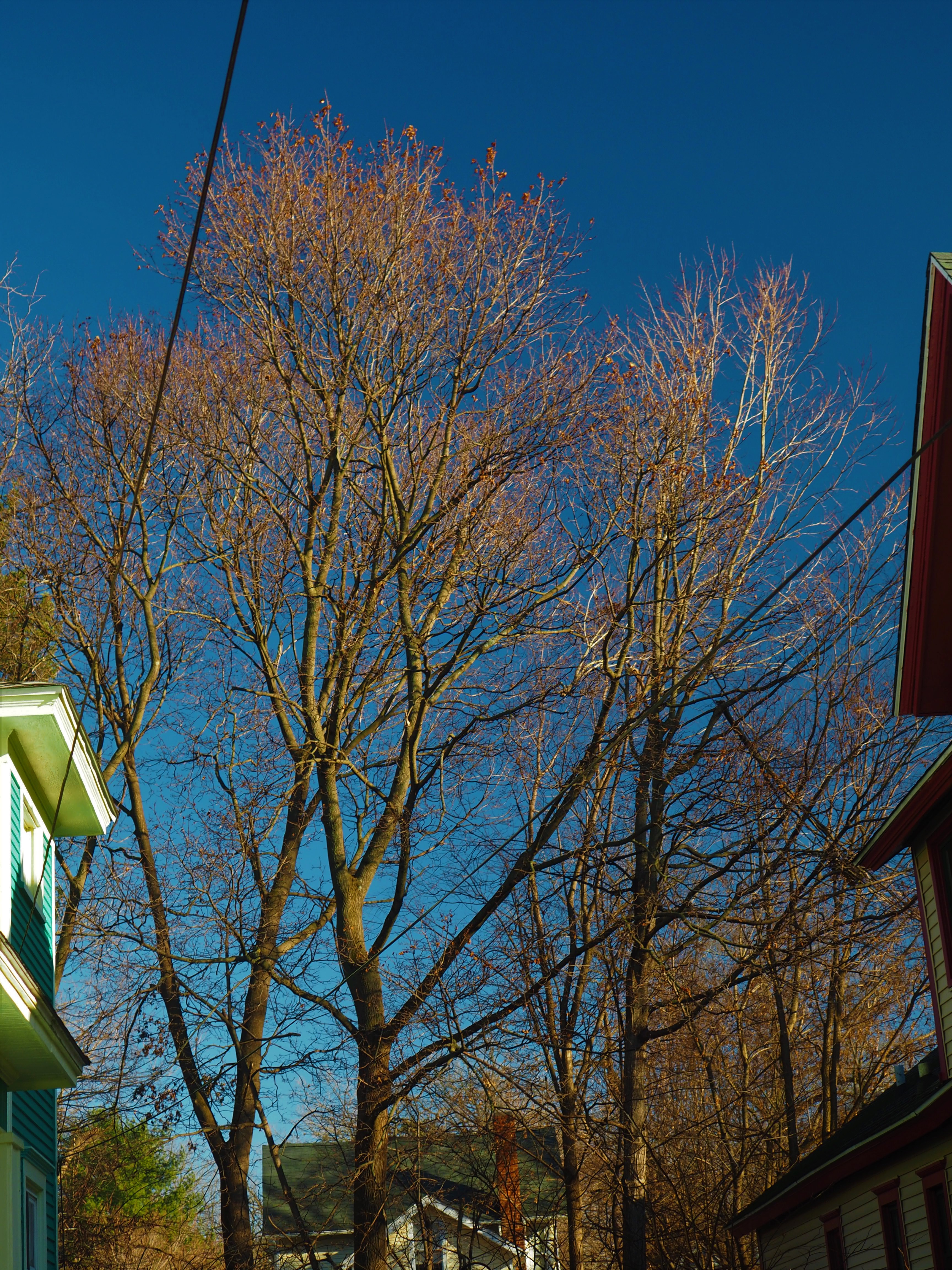
What a week it has been. I didn't think there would be enough pictures to form today's blog around, but all of a sudden, there seemed to be plenty, but with a LOT of questions as to what the pictures were of! So there has been plenty to think about and to photograph! Last year we didn't have all the possible blogs full, so we had already begun to skip a week or so. This year we haven't skipped any! I hope you have this kind of "problems", ones you know you will have to think and think about but which will be very satisfying if you can manage to handle them! (Even if the "answer" is "hmm, what happens if I try THIS?" I wish for you many strange things to think about!
Love, Martha
Back to December 5, 2021
Forward to December 19, 2021
Back to main menu
copyright Martha O'Kennon 2021


















































